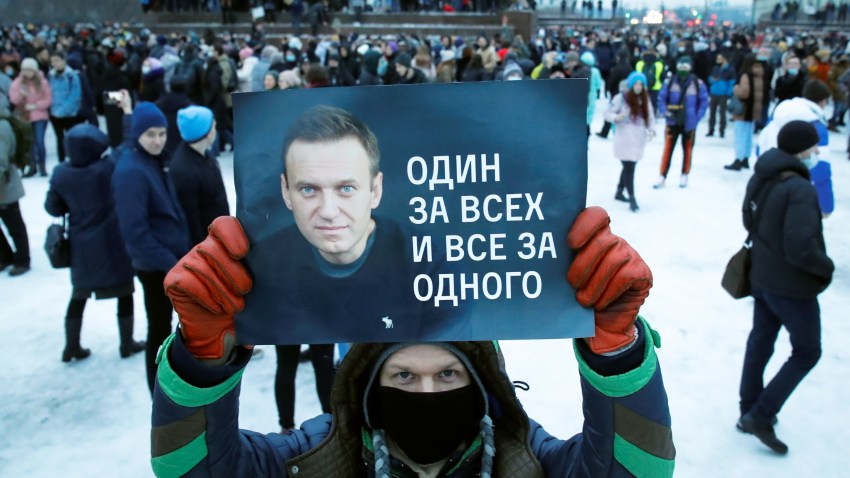During his 21 years in power, President Vladimir Putin has made a number of strategic missteps, but few will prove more consequential for him, his inner circle or indeed Russia itself than the jailing this week of anti-corruption crusader Alexei Navalny. As evidenced by wave after wave of protests across Russia since Navalny’s arrest upon his return to Moscow last month, the Kremlin’s harsh response has only provoked more Russians to take to the streets. It has also united the United States and its NATO allies after years of policy disarray on dealing with Moscow. Yet even now that minds in Washington and Brussels appear to be focused on imposing new costs on Russia, government officials and experts on both sides of the Atlantic are having trouble identifying pain points that will effectively put the squeeze on Putin’s autocracy.
There is little doubt that more sanctions are in the offing. But can they bring about a change in the Kremlin’s behavior? Navalny, and his team at the courageous Anti-Corruption Foundation in Moscow, last week proffered a new set of potential sanctions targets, naming 35 individuals who aid and abet Putin’s regime. Several sharp American observers and European analysts agree that, at a minimum, sanctions against Russia should be expanded, and most importantly applied to those implicated in Navalny’s poisoning last August with the chemical nerve agent Novichok. There is also debate about a so-called “nuclear option”—U.S. sanctions that would bar Western financial institutions from trading or holding Russia’s ruble-denominated government bonds.
But solutions to the complex calculus surrounding a more effective sanctions regime depend, in part, on other questions that few have either asked or answered with any satisfaction to date. The first one is what it will take for President Joe Biden and his team to convince leaders in Europe, but especially Germany, to finally walk away from Nord Stream 2—a major expansion of the existing pipeline under the Baltic Sea bringing Russian gas directly to Germany, which has already been delayed by U.S. sanctions on Gazprom, the Russian energy giant that is leading the pipeline’s development. The second question is whether there are other ways to target Russian wealth and currency reserves, beyond that “nuclear option,” which could carry other costs throughout the global financial system. The third is what kind of guardrails can be put in place to ensure that sanctions can be lifted if and when Moscow shows signs of positive change in its behavior. And the last and most difficult question, perhaps, is what options are available to the EU and the U.S. to manage the potential political and economic fallout at home from new Russia sanctions, as well as covert Russian retribution that will inevitably ensue with Putin in power.

